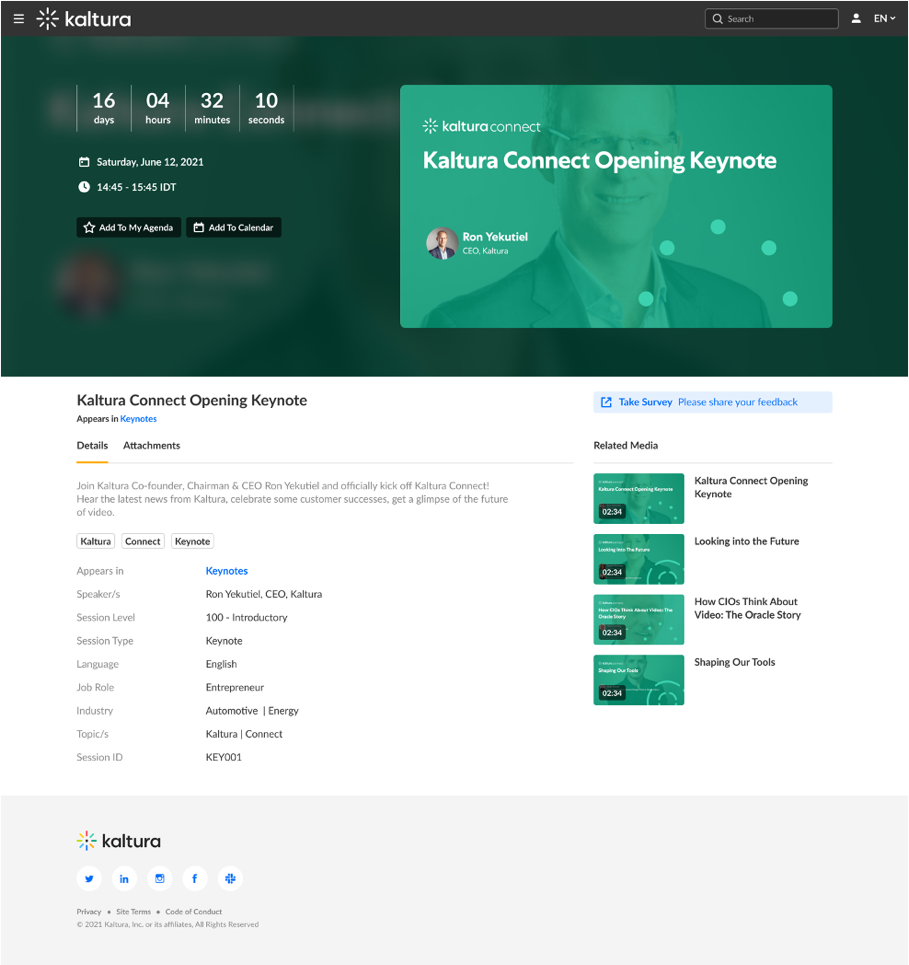Metadata is used to provide information about a specific video file. It provides context for the video content and makes it easier for your attendees to search for and find relevant content.
You can choose the session information you would like to share with your attendees. Below are the different types of metadata fields you can use to offer your attendees a smooth and seamless watching experience.
Basic Metadata:
- Title and Description
- Start & End Time
- Broadcast Type (Live/Simulive/VOD)
- Channels (tracks)
- Session ID
Custom Metadata:
Custom metadata helps provide unique information for the attendees of the session. That way, it is easier to search for sessions in the virtual Events Platform.
- Speakers
- Session level
- Session Type
- Industry
- Language
- Job Role
- Topic
- Session Thumbnail
Tags: Tags for recommended content, agenda filters, and global search engine.
Global Search Filters: The custom metadata fields can be used for global search filters (See Search Page Guide). Best practice is to have up to 5 filters, depending on the number of sessions in the event.
You can find more information about metadata components in our Entry Page Guide.
Behind the Scenes - Metadata
Let’s have a look at the metadata process behind the scenes.
You will be asked to fill 2 sheets.
- Metadata List that includes:
- Agenda filters
- Global search filters
- Registration interests
- Metadata Schema – All the information you want to give your attendees about your event sessions.
Metadata list

Metadata schema

This is where you add your metadata details which will be reflected on the Entry Page.
Entry Page

Metadata steps:
- Kaltura team will send you the metadata sample template with our best practice of costume data and examples of lists of values.
- You will send Kaltura the approved custom data fields and a finalized list of values under each field.
- You decide and fill in the metadata lists what are the:
- Agenda filters (what custom data fields should also be used as tags on the session)
- Global search filters
- Make sure that one of the custom data lists includes the registration interests.
4. Kaltura will share with you the metadata template. Then, you will fill in the metadata with all sessions information and submit it to Kaltura.
Deliverables
Please provide the following information. The Kaltura Event Team will discuss with you the metadata delivery method.
- Metadata Lists – Including agenda filters, global search filters, and registration interests.
- Metadata Schema - All the information you want to give your attendees for the best experience.
Channels and lists may not contain commas and each channel must have a unique name.
